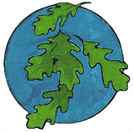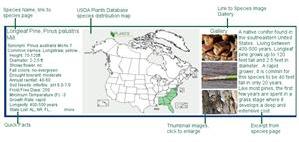

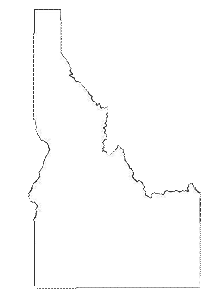
Home>Browse by State>Idaho
Idaho
The Gem State, 'Let it be perpetual'
Photo citation: © 1995 Saint Mary's College of California, Br. Alfred Brousseau

-Color denotes a tree that is rare or endangered

Want to add your tree to our picture gallery? Click here for details!
State Tree: Western White Pine


™

- Trees
- A-Z scientific
- A-Z by Common Name
- Families
- Aceraceae Maple Family
- Anacardiaceae Sumac Family
- Annonaceae Custard Apple Family
- Aquifoliaceae Holly Family
- Arecaceae, Palm Family
- Betulaceae Birch family
- Bignoniaceae Trumpet Creeper Family
- Burseraceae Frankincense Family
- Caprifoliaceae Honeysuckle Family
- Chrysobalanaceae Coco-plum Family
- Cornaceae Dogwood Family
- Cupressaceae Cypress Family
- Cyrillaceae Cyrilla Family
- Ebenaceae Ebony Family
- Ericaceae Heath Family
- Fabaceae Pea Family
- Fagaceae Beech Family
- Hamamelidaceae Witch Hazel Ffamily
- Hippocastanaceae Horse Chestnut Family
- Juglandaceae Walnut Family
- Lauraceae Laurel Family
- Leitneriaceae Corkwood Family
- Magnoliaceae Magnolia Family
- Meliaceae Mahogany Family
- Moraceae Mulberry Family
- Myricaceae Bayberry Family
- Myrsinaceae Myrsine Family
- Myrtaceae Myrtle Family
- Nyctaginaceae Four Oclock Family
- Olacaceae Olax Family
- Oleaceae Olive Family
- Pinaceae Pine Family
- Platanaceae Plane Tree Family
- Polygonaceae Buckwheat Family
- Rhamnaceae Buckthorn Family
- Rosaceae Rose Family
- Rubiaceae Madder Family
- Rutaceae Rue Family
- Salicaceae Willow Family
- Sapindaceae Soapberry Family
- Sapotaceae Sapodilla Family
- Simaroubaceae Quassia Family
- Styracaceae Storax Family
- Symplocaceae Sweetleaf Family
- Theaceae Tea Family
- Tiliaceae Lindon Family
- Ulmaceae Elm Family
- Taxaceae Yew Family
- Yucca Family
- Browse by State
- Rare or Endangered Species
- Trees_with_Special_Uses
- Tallest and Biggest
- Noxious Weeds
- Causes
- About Us
- Our Stores
Native Trees of Idaho
We are part of the Hubpages community.
Click here for more info.
Click here for more info.

Custom Search
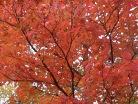
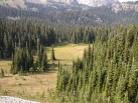
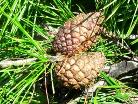
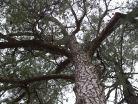
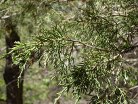
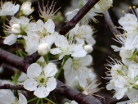

The landscape of Idaho holds many
surprises, which are easy to see in the 27 State
Parks and 11 National Forests and parks. The
majority of the forests in Idaho are sprawling Fir
forests and they conceal some of the most beautiful
little known waterfalls in the country. Thousand
Springs State Park holds the National Natural
Landmark Niagra Springs and many stairstep falls
as the Malad River courses through Malad Gorge.
Mesa Falls is just a hop, skip, and a jump away from
Harriman State Park. The park boasts world class

fly fishing on the Henry's Fork steam, where you can wade into the cool clear waters
surrounded by pine and fir trees and have a weekend getaway at the campgrounds.
Idaho also has 400 foot white quartz sand dunes! Popular with the ATV crowd, the sand
dunes tower above the trees, creating stunning landscapes. At more than 11,000 acres, the
St. Anthony Sand Dunes are a great place to see this unique habitat and enjoy some outdoor
motorized activity. For the nature lover with an interest in history, a visit to the area of
Massacre Rock State Park will treat you to the signatures of many brave pioneers of the
Oregon Trail on nearby Register Rock. Rock climbing after walking through trails of
lodgepole pine, western white pine, and subalpine spruce, is another popular outdoor activity
in Idaho. With locations like Hell's Gate or Castle Rock there are rock climbing experiences
for those of any ability.
Idaho is a land of largely unknown beauty but, as those who have already discovered it
know, has a lot to offer and plenty of activities and adventures to keep the weekend warrior,
or the week long camper, happy and busy but always relaxed!
Idaho Tree Facts

Forested acres: 21.6 million
Percent of total area forested: 41%
Predominant forest type: True Fir-Douglas Fir
Number of National Forests/Parks: 11
Number of State Parks: 27
Number of Tree city USA communities: 70
Number of invasive tree species: 26 (see state list for noxious/invasive plants)
Most damaging insect (to trees): Balsam Wooly Adelgid
Pathogen of Concern: White Pine Blister Rust
Number of tree families in our collection: 11
Number of endangered or threatened species in our collection: 0
Sources:
Idaho Governor's Office of Species Conservation
Visit Idaho.org
Arborday.org
US Forest Service
United States Department Of Agriculture, Natural Resources Conservation Services: PLANTS Database
Idaho Forest Products Commission
Additional state resources:
Idaho Governor's Office
Visit Idaho.org
Idaho Parks and Recreation, annual passes available!
Percent of total area forested: 41%
Predominant forest type: True Fir-Douglas Fir
Number of National Forests/Parks: 11
Number of State Parks: 27
Number of Tree city USA communities: 70
Number of invasive tree species: 26 (see state list for noxious/invasive plants)
Most damaging insect (to trees): Balsam Wooly Adelgid
Pathogen of Concern: White Pine Blister Rust
Number of tree families in our collection: 11
Number of endangered or threatened species in our collection: 0
Sources:
Idaho Governor's Office of Species Conservation
Visit Idaho.org
Arborday.org
US Forest Service
United States Department Of Agriculture, Natural Resources Conservation Services: PLANTS Database
Idaho Forest Products Commission
Additional state resources:
Idaho Governor's Office
Visit Idaho.org
Idaho Parks and Recreation, annual passes available!
Follow the links to view species native to Idaho. If the genus is not linked, species are listed on the family page.
Aceraceae, Maple
Betulaceae, Birch
Alnus, Alder
Caprifoliaceae, Honeysuckle
Cornaceae, Dogwood
Cupressaceae- Cypress
Juniperus, Juniper
Thuja, Arborvitae
Aceraceae, Maple
Betulaceae, Birch
Alnus, Alder
Caprifoliaceae, Honeysuckle
Cornaceae, Dogwood
Cupressaceae- Cypress
Juniperus, Juniper
Thuja, Arborvitae
Idaho Tree Families and Genera

click to enlarge.
Useful information while browsing species:
• How to read a botanical name
• How to use our species boxes:
• How to read a botanical name
• How to use our species boxes:
-Color denotes a tree that is rare or endangered

Please note: This is not a complete list of all native tree families and species found in Idaho. We are constantly working towards a more comprehensive list and will add families and their species as completed.
Additional Resources:
North American Native Tree Families
North American A to Z List by Scientific Name
North American A to Z List by Common Name
North American Native Tree Families
North American A to Z List by Scientific Name
North American A to Z List by Common Name
Fabaceae, Pea
Pinaceae, Pine
Abies, Fir
Larix, Larch
Picea, Spruce
Pinus, Pine
Pseudotsuga, Douglas Fir
Tsuga, Hemlock
Pinaceae, Pine
Abies, Fir
Larix, Larch
Picea, Spruce
Pinus, Pine
Pseudotsuga, Douglas Fir
Tsuga, Hemlock
Rosaceae, Rose
Crataegus, Hawthorn
Prunus, Plum/Cherry
Salicaceae, Willow
Populus, Cottonwood
Salix, Willow
Taxaceae, Yew
Ulmaceae, Elm
Crataegus, Hawthorn
Prunus, Plum/Cherry
Salicaceae, Willow
Populus, Cottonwood
Salix, Willow
Taxaceae, Yew
Ulmaceae, Elm
Idaho Endangered or Threatened Tree Species

This is not a comprehensive list but we are always working on adding more and will update accordingly.
Currently, Idaho has no tree species listed as threatened or endangered.
Currently, Idaho has no tree species listed as threatened or endangered.
Looking for a nursery near you?
Check out our nursery listing by county below!
Sorry, we do not currently have any tree nursery listings for this state. We do update these lists, so please check back.
Check out our nursery listing by county below!
Sorry, we do not currently have any tree nursery listings for this state. We do update these lists, so please check back.



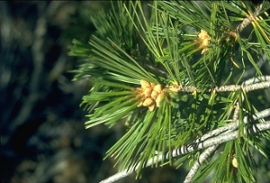
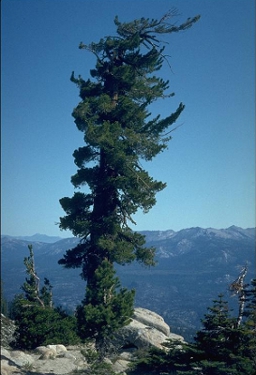
Photo citation: © 1995 Saint Mary's College of California, Br. Alfred Brousseau
Once the dominant forest type in Idaho, the western white pine was made the State Tree in 1935. In the 40 years, 93% of the Western White Pine forests are gone, largely due to a disease called White Pine Blister Rust. The disease was introduced in 1901 after a farmer send seeds to France and then planted the returned seedlings. From there the deadly fungus spread to the river and then went on to decimate white pine populations, not just in the west but all over North America. Sadly, the mortality rate is greater than the regeneration rate and the white pine forests are disappearing. There is
hope however as individual trees have survived and are seemingly resistant to this non-native pathogen.
The largest remaining stand of Pinus monticola in North American is in the northern part of Idaho. The largest western white pine tree in the world is also fittingly in Idaho, standing at 219 feet and found along the Elk River. This native conifer is mostly found in the Northern Rockies, although small stands do occur elsewhere, growing on gentle slopes with deep soil. It is a rapid growing tree and commonly reaches 175 feet tall. Western White pine trees have thick trunks for a member of the Pinus genus, measuring anywhere from 5 to 8 feet in diameter. The needles grow in bundles of 5 and are 3 to 5 inches long and the pine cones may be 5 inches in length but maybe as long as 15 inches!
The largest remaining stand of Pinus monticola in North American is in the northern part of Idaho. The largest western white pine tree in the world is also fittingly in Idaho, standing at 219 feet and found along the Elk River. This native conifer is mostly found in the Northern Rockies, although small stands do occur elsewhere, growing on gentle slopes with deep soil. It is a rapid growing tree and commonly reaches 175 feet tall. Western White pine trees have thick trunks for a member of the Pinus genus, measuring anywhere from 5 to 8 feet in diameter. The needles grow in bundles of 5 and are 3 to 5 inches long and the pine cones may be 5 inches in length but maybe as long as 15 inches!
Tree lists:
•A-Z by scientific
name
•A-Z by common
name
•By Family
For state A-Z list click state name below.
•A-Z by scientific
name
•A-Z by common
name
•By Family
For state A-Z list click state name below.
